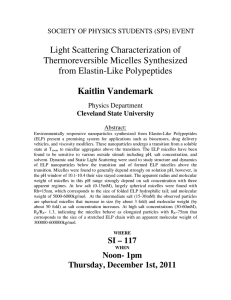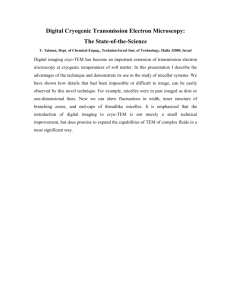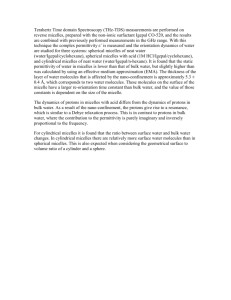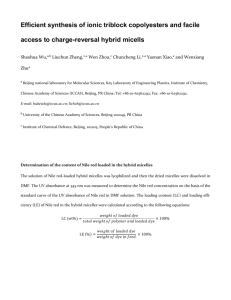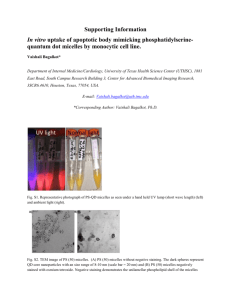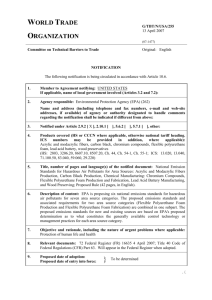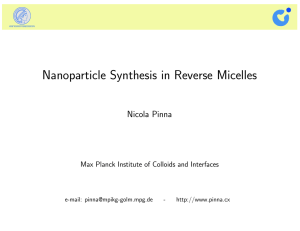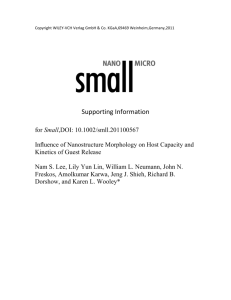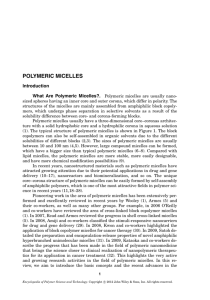abstract examples
advertisement
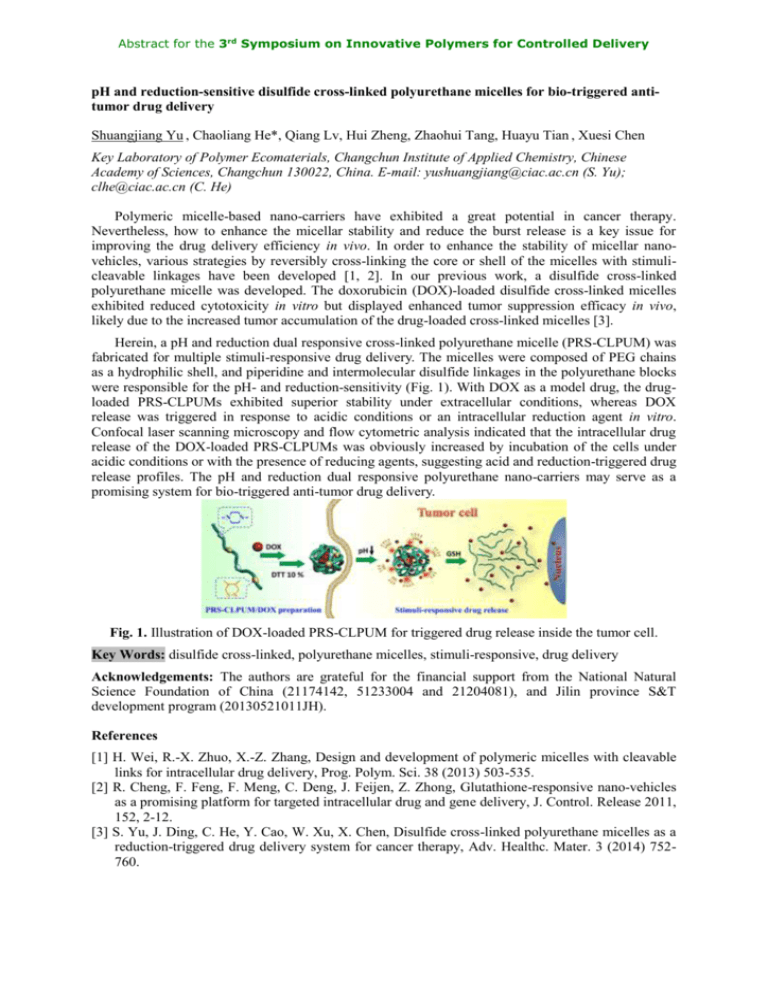
Abstract for the 3rd Symposium on Innovative Polymers for Controlled Delivery pH and reduction-sensitive disulfide cross-linked polyurethane micelles for bio-triggered antitumor drug delivery Shuangjiang Yu , Chaoliang He*, Qiang Lv, Hui Zheng, Zhaohui Tang, Huayu Tian , Xuesi Chen Key Laboratory of Polymer Ecomaterials, Changchun Institute of Applied Chemistry, Chinese Academy of Sciences, Changchun 130022, China. E-mail: yushuangjiang@ciac.ac.cn (S. Yu); clhe@ciac.ac.cn (C. He) Polymeric micelle-based nano-carriers have exhibited a great potential in cancer therapy. Nevertheless, how to enhance the micellar stability and reduce the burst release is a key issue for improving the drug delivery efficiency in vivo. In order to enhance the stability of micellar nanovehicles, various strategies by reversibly cross-linking the core or shell of the micelles with stimulicleavable linkages have been developed [1, 2]. In our previous work, a disulfide cross-linked polyurethane micelle was developed. The doxorubicin (DOX)-loaded disulfide cross-linked micelles exhibited reduced cytotoxicity in vitro but displayed enhanced tumor suppression efficacy in vivo, likely due to the increased tumor accumulation of the drug-loaded cross-linked micelles [3]. Herein, a pH and reduction dual responsive cross-linked polyurethane micelle (PRS-CLPUM) was fabricated for multiple stimuli-responsive drug delivery. The micelles were composed of PEG chains as a hydrophilic shell, and piperidine and intermolecular disulfide linkages in the polyurethane blocks were responsible for the pH- and reduction-sensitivity (Fig. 1). With DOX as a model drug, the drugloaded PRS-CLPUMs exhibited superior stability under extracellular conditions, whereas DOX release was triggered in response to acidic conditions or an intracellular reduction agent in vitro. Confocal laser scanning microscopy and flow cytometric analysis indicated that the intracellular drug release of the DOX-loaded PRS-CLPUMs was obviously increased by incubation of the cells under acidic conditions or with the presence of reducing agents, suggesting acid and reduction-triggered drug release profiles. The pH and reduction dual responsive polyurethane nano-carriers may serve as a promising system for bio-triggered anti-tumor drug delivery. Fig. 1. Illustration of DOX-loaded PRS-CLPUM for triggered drug release inside the tumor cell. Key Words: disulfide cross-linked, polyurethane micelles, stimuli-responsive, drug delivery Acknowledgements: The authors are grateful for the financial support from the National Natural Science Foundation of China (21174142, 51233004 and 21204081), and Jilin province S&T development program (20130521011JH). References [1] H. Wei, R.-X. Zhuo, X.-Z. Zhang, Design and development of polymeric micelles with cleavable links for intracellular drug delivery, Prog. Polym. Sci. 38 (2013) 503-535. [2] R. Cheng, F. Feng, F. Meng, C. Deng, J. Feijen, Z. Zhong, Glutathione-responsive nano-vehicles as a promising platform for targeted intracellular drug and gene delivery, J. Control. Release 2011, 152, 2-12. [3] S. Yu, J. Ding, C. He, Y. Cao, W. Xu, X. Chen, Disulfide cross-linked polyurethane micelles as a reduction-triggered drug delivery system for cancer therapy, Adv. Healthc. Mater. 3 (2014) 752760. Abstract for the 3rd Symposium on Innovative Polymers for Controlled Delivery Delivery of polyamine-functionalized mesoporous silica nanoparticles into cancerous cells Si Yu Tan1, Chung Yen Ang1, Yanli Zhao1,2,* 1 Division of Chemistry and Biological Chemistry, Nanyang Technological University, 21 Nanyang Link, 637371 Singapore. E-mail: zhaoyanli@ntu.edu.sg (Y. Zhao); TANS0300@e.ntu.edu.sg (S.Y. Tan) 2 School of Material Science and Engineering, Nanyang Technological University, 639798 Singapore. The ability of polyamine amides to bind to glutamate receptors has made them useful in studying cancer propagation [1]. In order to harness this ability, 4-hydroxyphenylacetyl spermine was conjugated onto the mesoporous silica nanoparticles (MSNPs) for delivery into cancerous cellsby targeting the glutamate receptors on the cell surface [2]. The MSNPs were synthesized via a condensation reaction, which was followed by a “click” reaction to couple the alkyne functionalized 4hydroxyphenylacetyl spermine onto the MSNP surface (Fig. 1). Thereafter, a cleavable disulphide ligand was attached on the surface of the nanoparticles, which could be cleaved to release drugs from the mesopores upon a redox trigger. The MSNPs were characterized by a series of techniques such as TEM, XRD and BET to study the morphology and surface properties. In addition, XPS and zeta potential were also conducted to confirm the presence of the different ligands on the surface of the nanoparticles. Then, the drug release profiles were studied with various reducing agents, showing successful release of the drugs. Further studies will be conducted to compare the cell viability of MSNPs with and without the polyamine amide groups. Fluorescence microscopy will be used to confirm the cellular uptake of the functionalized MSNPs. Fig. 1. Schematic representation of MSNP functionalized with a short polyamine chain for application in drug delivery. Key Words: drug delivery, mesoporous silica nanoparticle, polyamine chain, cancer therapy References [1] A. Stepulak, H. Luksch, C. Gebhardt, O. Uckermann, J. Marzahn, M. Sifringer, W. Rzeski, C. Staufner, K.S. Brocke, L. Turski, C. Ikonomidou, Expression of glutamate receptor subunits in human cancers, Histochem. Cell Biol. 132 (2009) 435-445. [2] C. Wang, Z. Li, D. Cao, Y.L. Zhao, J.W. Gaines, O.A. Bozdemir, M.W. Ambrogio, M. Frasconi, Y.Y. Botros, J.I. Zink, J.F. Stoddart, Stimulated release of size-selected cargos in succession from mesoporous silica nanoparticles, Angew. Chem. Int. Ed. 51 (2012) 5460-5465.
